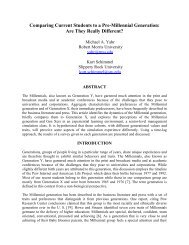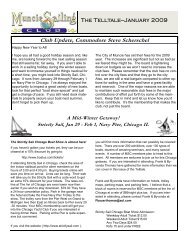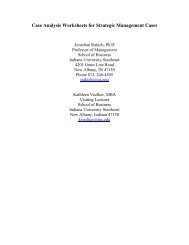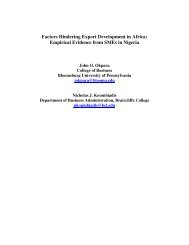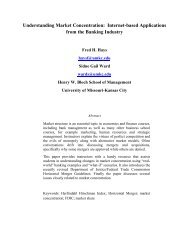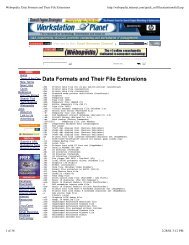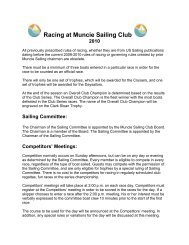Active versus Passive Management of International Mutual Funds ...
Active versus Passive Management of International Mutual Funds ...
Active versus Passive Management of International Mutual Funds ...
Create successful ePaper yourself
Turn your PDF publications into a flip-book with our unique Google optimized e-Paper software.
22<br />
ratio for the passively managed Hang Seng Index and the actively managed Equity Asia Pacific<br />
Investment Category.<br />
H6 0 : For the 1995 to 2008 periods, there is no significant difference between the mean Sharpe<br />
ratio for the passively managed S&P/ASX Index and the actively managed Equity Asia Pacific<br />
Investment Category.<br />
H6 a : For the 1995 to 2008 periods, there is a significant difference between the mean Sharpe<br />
ratio for the passively managed S&P/ASX Index and the actively managed Equity Asia Pacific<br />
Investment Category.<br />
Table 2. Hypothesis-Methodology<br />
Hypothesis Test<br />
Methodology<br />
H1 0 Equity Europe <strong>versus</strong> Dow Jones EURO STOXX F-test two sample for<br />
50<br />
variance<br />
H2 0 Equity Europe <strong>versus</strong> FTSE 100 F-test two sample for<br />
variance<br />
H3 0 Equity Europe <strong>versus</strong> DAX F-test two sample for<br />
variance<br />
H4 0 Equity Asia Pacific <strong>versus</strong> Nikkei 225 F-test two sample for<br />
variance<br />
H5 0 Equity Asia Pacific <strong>versus</strong> Hang Seng F-test two sample for<br />
variance<br />
H6 0 Equity Asia Pacific <strong>versus</strong> S&P/ASX F-test two sample for<br />
variance<br />
Data analysis methods<br />
Data analysis was conducted using statistical analyses and hypothesis testing. The F-test<br />
Two Sample for Variances was used to test for significant differences between the population<br />
means <strong>of</strong> passive indices and active investment categories as identified in Table 2 [64].<br />
ANALYSIS AND PRESENTATION OF FINDINGS<br />
The following details the results and findings <strong>of</strong> the study’s hypotheses tests based on the<br />
data extracted from the Morningstar Direct Database and thereby addresses the study’s research<br />
question. The findings <strong>of</strong> the research are presented in the order in which the hypotheses have<br />
been stated. The research question for the study was: During the 1995-2008 time periods which<br />
management style, active or passive, produced the best international mutual fund performance on<br />
a risk adjusted basis<br />
Equity Europe Morningstar investment category<br />
Hypothesis 1<br />
H1 0 : For the 1995 to 2008 periods, there is no significant difference between the mean<br />
Sharpe ratio for the passively managed Dow Jones EURO STOXX 50 Index and the actively<br />
managed Equity Europe Investment Category.<br />
H1 a : For the 1995 to 2008 periods, there is a significant difference between the mean<br />
Sharpe ratio for the passively managed Dow Jones EURO STOXX 50 Index and the actively<br />
managed Equity Europe Investment Category.<br />
Weekly Sharpe ratios were calculated from daily data for the Dow Jones EURO STOXX<br />
50 Index and Morningstar Equity Europe Investment Category for the period January 1, 1995-<br />
December 31, 2008 with 731 periods. Appendix B presents a side-by-side comparison <strong>of</strong> the



